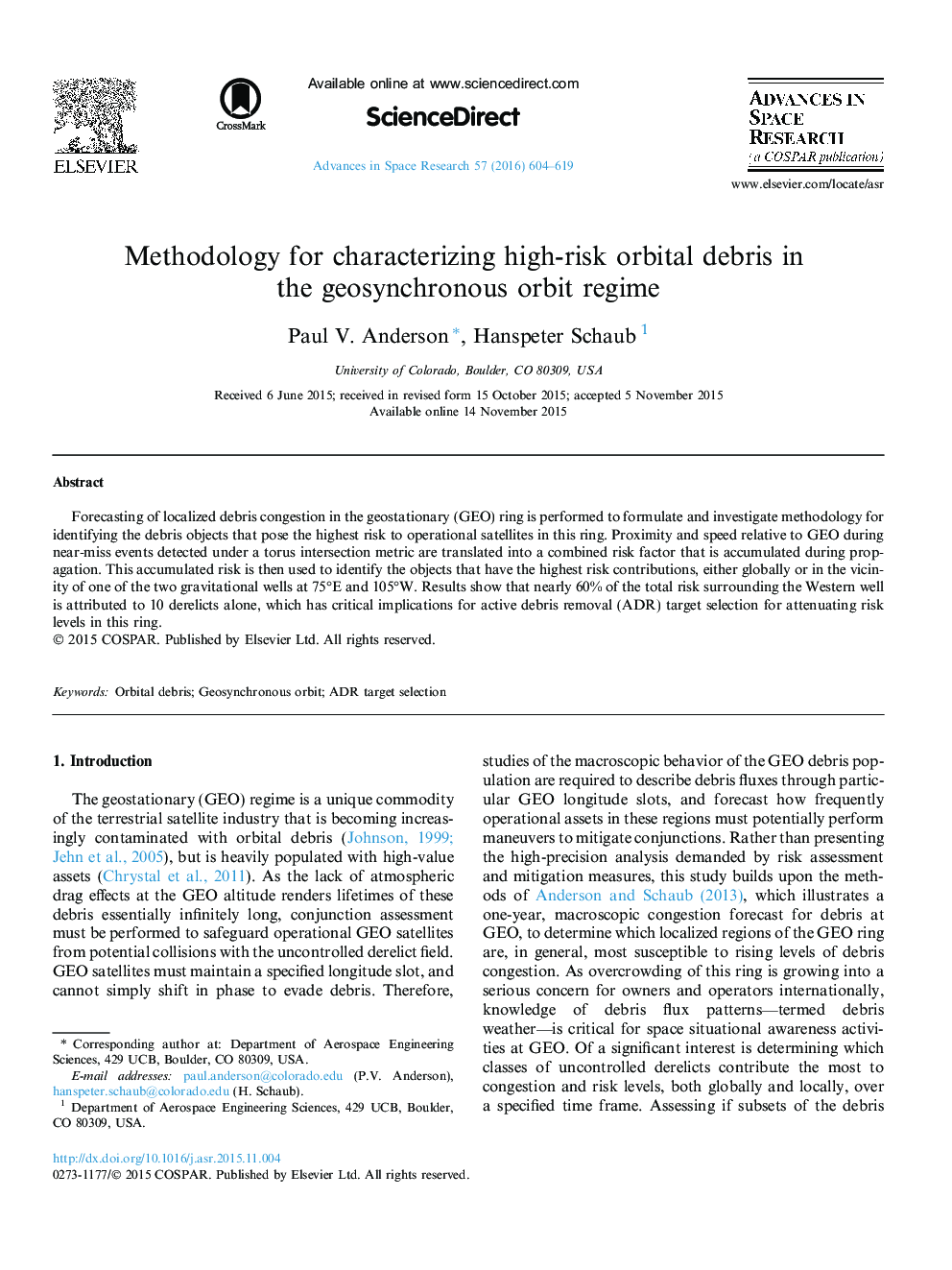| Article ID | Journal | Published Year | Pages | File Type |
|---|---|---|---|---|
| 10694137 | Advances in Space Research | 2016 | 16 Pages |
Abstract
Forecasting of localized debris congestion in the geostationary (GEO) ring is performed to formulate and investigate methodology for identifying the debris objects that pose the highest risk to operational satellites in this ring. Proximity and speed relative to GEO during near-miss events detected under a torus intersection metric are translated into a combined risk factor that is accumulated during propagation. This accumulated risk is then used to identify the objects that have the highest risk contributions, either globally or in the vicinity of one of the two gravitational wells at 75°E and 105°W. Results show that nearly 60% of the total risk surrounding the Western well is attributed to 10 derelicts alone, which has critical implications for active debris removal (ADR) target selection for attenuating risk levels in this ring.
Keywords
Related Topics
Physical Sciences and Engineering
Earth and Planetary Sciences
Space and Planetary Science
Authors
Paul V. Anderson, Hanspeter Schaub,
